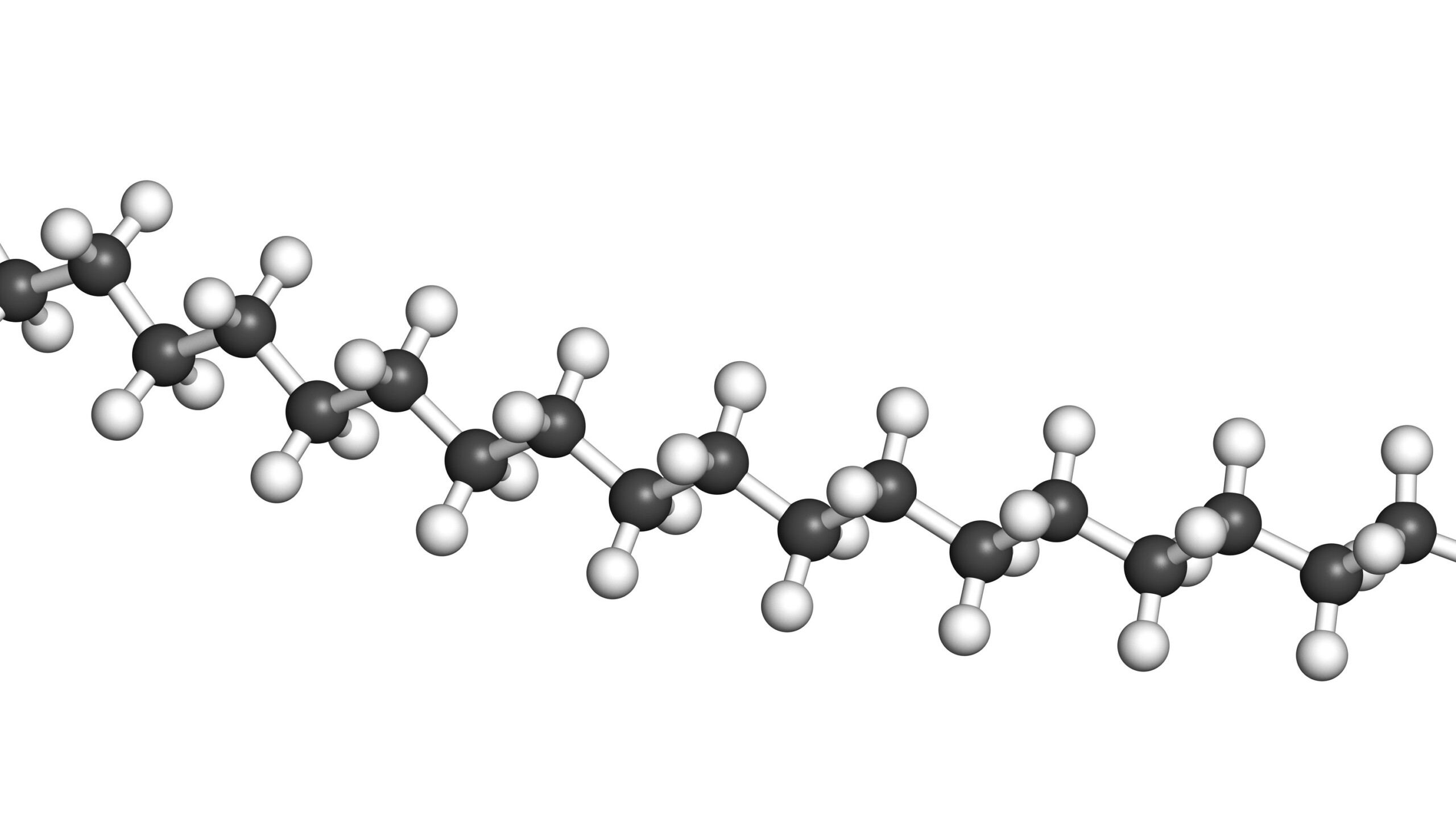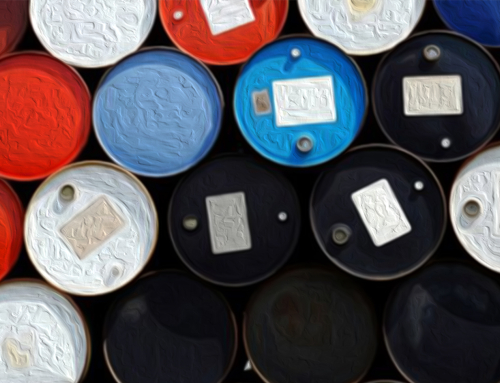Polyethylene is an excellent choice in material for a container. Generally, polyethylene is chemical resistant and inert. The lack of polarity and the ability to crystallize give polyethylene great resistance to chemicals. Further, there is no known solvent for polyethylene at room temperature. This makes polyethylene a great material for storage of chemicals and other hazardous material.
We recondition and reuse drums made from high density and high molecular weight polyethylene as opposed to light density. As polyethylene’s density and molecular weight increase, polyethylene’s chemical resistance, stress crack resistance, tensile strength and stiffness increase. Furthermore, high density and high molecular weight polyethylene has decreased permeability in comparison to light density polyethylene.
With all these positive traits, you’d think high density polyethylene is the perfect end all be all material for chemical storage. But, some chemicals are not compatible with polyethylene because of the negative effects they exhibit on polyethylene. The negative effects on polyethylene are divided into three categories: stress-cracking, plasticization and oxidation. Of these three groups, only oxidation is a chemical reaction. You can use the chart below to determine the packaging compatibility of polyethylene drums with various materials.
| Key | |
|---|---|
| I | Appears to be intert, no known effects |
| N | Not recommended |
| V | Variable resistance, conditions dependent |
| P | Plasticizing, solvating substances |
| S | Stress-cracking substance |
| X | Suspect stress-cracking substance |
| O | Oxidizing Substances |
| Inorganic Substances | Organic Substances | Foodstuff and miscellaneous | |||||||||||
|---|---|---|---|---|---|---|---|---|---|---|---|---|---|
| Name | HDPE 23* C | HDPE 60* C | Notes | Name | Hdpe 23* C | HDPE 60* C | Notes | Name | Hdpe 23* C | HDPE 60* C | Notes | ||
| Air | I | I | Acetaldehyde (100%) | V | N | S | Acetic Acid (10%) | I | I | S | |||
| Aluminum chloride (all conc) | I | I | Acetic acid (60%) | I | V | S | Ascorbic acid (10%) | I | I | ||||
| Aluminum fluoride (all conc) | I | I | Acetic Anhydride | N | N | X | Beer | I | I | ||||
| Aluminum sulfate (all conc) | I | I | Amyl acetate (100%) | I | I | XP | Butter | I | I | X | |||
| Alums (all types) | I | I | Amyl aclcohol (100%) | N | N | SP | Camphor Oil | V | – | XP | |||
| Ammonia (100% dry gas) | I | I | Amyl chloride (100%) | V | – | P | Cider | I | I | S | |||
| Ammonium carbonate | I | I | Aniline(100%) | N | V | SP | Coffee | I | I | ||||
| Ammonium chloride (sat’d) | I | I | Aromatic Hydrocarbons | N | N | XP | Cola Concentrates | I | I | S | |||
| Ammonium fluoride (sat’d) | I | I | Benzene | N | N | XP | Corn Oil | I | I | X | |||
| Ammonium hydroxide (10%) | I | I | Benzoic acid (all conc) | I | I | Cottonseed Oil | I | I | S | ||||
| Ammonium hydroxide (28%) | I | I | Butanediol (10%) | I | I | S | Dextrin (sat’d) | I | I | ||||
| Ammonium nitrate (sat’d) | I | I | Butanediol (60%) | I | I | S | Dextrose (sat’d) | I | I | ||||
| Ammonium persulphate (sat’d) | I | I | Butanediol (100%) | I | I | S | Ethyl alcohol | I | I | S | |||
| Ammonium sulphate (sat’d) | I | I | n-Butyl Acetate (100%) | I | V | XP | Fish Solubles | I | I | S | |||
| Aqua regia | N | N | O | n-Butyl Alcohol (100%) | I | I | S | Fructose | I | I | |||
| Arsenic acid (all conc) | I | I | Butyric acid (conc) | N | N | P | Fruit Pulp | I | I | X | |||
| Barium carbonate (sat’d) | I | I | Castor Oil (conc) | I | I | S | Glucose | I | I | ||||
| Barium chloride (sat’d) | I | I | Chlorobenzene | N | N | XP | Grape sugar (sat. aq.) | I | I | ||||
| Barium hydrocide | I | I | Chloroform | V | N | XP | Milk | I | I | ||||
| Barium sulphide (sat’d) | I | I | Chlorosulphonic acid (100%) | N | N | Molasses | I | I | |||||
| Bismuth carbonate (sat’d) | I | I | Citric acid (sat’d) | I | I | S | Shortening | I | I | S | |||
| Bleach lye (10%) | I | I | Coconut oil alcohols | I | I | S | Soap solution (any conc) | I | I | S | |||
| Borax (sat’d) | I | I | Detergents, synthetic | I | I | S | Starch Solution | I | I | S | |||
| Boric acid (all conc.) | I | I | Dibutylphthalate | V | V | X | Tallow | I | – | P | |||
| Boron trifluoride | I | I | Dichlorobenzene (o & p) | N | N | XP | Vanilla extract | I | I | S | |||
| Brine | I | I | Diethyl ketone | V | V | XP | Vinegar | I | I | ||||
| Bromine (liquid) | N | N | O | Diethylene glycol | I | I | S | Whisky | I | – | S | ||
| Calcium bisulphide | I | I | Diglycolic acid | I | – | S | Wines | I | I | X | |||
| Calcium oxide (saturated) | I | I | Dimethylamine | N | N | Yeast | I | I | |||||
| Calcium sulphate | I | I | Ethyl acetate (100%) | V | – | XP | |||||||
| Carbon dioxide (all conc) | I | I | Ethyl alcohol (100%) | I | I | S | |||||||
| Carbon disulphide | I | I | Ethyl benzene | N | N | XP | |||||||
| Carbon monoxide | N | N | Ethyl chloride | N | N | P | |||||||
| Carbon tetrachloride | I | I | P | Ethyl ether | N | N | P | ||||||
| Carbonic acid | V | N | Ethylene chloride | N | N | XP | |||||||
| Chlorine (100% dry gas) | I | I | O | Ethylene glycol | I | I | S | ||||||
| Chlorine liquid | – | – | O | Formic acid (all conc) | I | I | |||||||
| Chlorine water (2% sat’d sol’n) | N | N | Furfural (100%) | V | – | P | |||||||
| Copper chloride (Sat’d) | I | I | Furfuryl alcohol | V | – | XP | |||||||
| Copper cyanide (sat’d) | I | I | Gallic acid (sat’d) | I | I | S | |||||||
| Copper fluoride (2%) | I | I | Gasoline | V | V | XP | |||||||
| Copper nitrate (sat’d) | I | I | Glycerine | I | I | S | |||||||
| Copper sulphate (sat’d) | I | I | Glycol | I | I | S | |||||||
| Developers, photographic | I | I | Glycolic acid (30%) | I | I | S | |||||||
| Diazo salts | I | I | n-Heptane | V | V | XP | |||||||
| Disodium phosphate | I | I | Hezachlorobenzene | I | – | ||||||||
| Emulsion, photographic | I | I | S | Hexanol, tertiary | I | I | S | ||||||
| Ferric chloride (sat’d) | I | I | Hydroquinone | I | I | ||||||||
| Ferric nitrate (sat’d) | I | I | Inks | I | I | S | |||||||
| Ferrous chloride (sat’d) | I | I | Methyl alcohol (100%) | I | I | S | |||||||
| Ferrous sulphate | I | I | Methylene chloride (100%) | V | N | XP | |||||||
| Fluoboric acid | I | V | Mineral oils | I | V | P | |||||||
| Fluosilicic acid (conc) | I | – | Naphtha | V | N | PS | |||||||
| Fluosilicic acid (32%) | I | I | n-propyl alcohol | I | I | S | |||||||
| Hydrobromic acid (50%) | I | I | Propylene dichloride (100%) | N | – | XP | |||||||
| Hyrdrochloric acid (all conc) | I | I | Propylene glycol | I | I | S | |||||||
| Hydrocyanic acid (sat’d) | I | I | Pyridine | I | – | X | |||||||
| Hydrofluoric acid (40%) | I | I | Resorcinol (sat’d) | I | I | ||||||||
| Hydrofluoric acid (60%) | I | I | Salicylic acid (sat’d) | I | I | ||||||||
| Hydrogen (100%) | I | I | Sodium acetate (sat’d) | I | I | ||||||||
| Hydrogen chloride (dry gas) | I | I | Stearic acid (100%) | I | – | S | |||||||
| Hydrogen sulphide | I | I | Tannic acid (sat’d) | I | I | S | |||||||
| Hypochlorous acid (conc) | I | I | Tetrahydrofuran | V | N | XP | |||||||
| Iodine (in Kl sol’n) | V | – | O | Toluene | V | V | XP | ||||||
| Lead acetate (sat’d) | I | I | Trichloroethylene | N | N | XP | |||||||
| Lead nitrate | I | I | Triethylene glycol | I | I | XP | |||||||
| Magnesium carbonate (sat’d) | I | I | Turpentine | V | V | P | |||||||
| Magnesium chloride (sat’d) | I | I | Urea (0-30%) | I | I | ||||||||
| Magnesium hydrocide (sat’d) | I | I | Wetting agents | I | I | S | |||||||
| Magnesium nitrate (sat’d) | I | I | Xylene | V | V | P | |||||||
| Magnesium sulphate (sat’d) | I | I | |||||||||||
| Mercury | I | I | |||||||||||
| Nickel chloride (conc) | I | I | |||||||||||
| Nickel nitrate (sat’d) | I | I | |||||||||||
| Nickel sulphate (conc) | I | I | |||||||||||
| Nitric acid (70%) | I | I | O | ||||||||||
| Nitric acid (95-98%) | N | N | O | ||||||||||
| Photographic solutions | I | I | |||||||||||
| Plating Solutions for: | |||||||||||||
| Brass | I | I | S | ||||||||||
| Cadmium | I | I | S | ||||||||||
| Copper | I | I | S | ||||||||||
| Gold | I | I | S | ||||||||||
| Lead | I | I | S | ||||||||||
| Nickel | I | I | S | ||||||||||
| Silver | I | I | S | ||||||||||
| Tin | I | I | S | ||||||||||
| Zinc | I | I | S | ||||||||||
| Potassium bicarbonate (sat’d) | I | I | |||||||||||
| Potassium Bromide (sat’d) | I | I | |||||||||||
| Potassium carbonate | I | I | |||||||||||
| Potassium chlorate (sat’d) | I | I | |||||||||||
| Potassium chloride (sat’d) | I | I | |||||||||||
| Potassium chromate (40%) | I | I | |||||||||||
| Potassium cyanide (sat’d) | I | I | |||||||||||
| Potassium dichromate (40%) | I | I | |||||||||||
| Potassium ferri/ferro cyanide (sat’d) | I | I | |||||||||||
| Potassium fluoride | I | I | |||||||||||
| Potassium hydroxide (conc) | I | I | |||||||||||
| Potassium nitrate (sat’d) | I | I | |||||||||||
| Potassium perchlorate (10%) | I | I | |||||||||||
| Potassium permanganate (20%) | I | I | |||||||||||
| Potassium persulphate (sat’d) | I | I | |||||||||||
| Potassium sulphate (conc) | I | I | |||||||||||
| Potassium sulphide (conc) | I | I | |||||||||||
| Potassium sulphite (conc) | I | I | |||||||||||
| Sea water | I | I | |||||||||||
| Selenic acid | I | I | |||||||||||
| Silver nitrate solution | I | I | |||||||||||
| Sodium benzoate (35%) | I | I | |||||||||||
| Sodium bicarbonate (sat’d) | I | I | |||||||||||
| Sodium bisulphate (sat’d) | I | I | |||||||||||
| Sodium bisulphite (sat’d) | I | I | |||||||||||
| Sodium borate | I | I | |||||||||||
| Sodium bromide (dilute) | I | I | |||||||||||
| Sodium carbonate (conc) | I | I | |||||||||||
| Sodium chlorate (sat’d) | I | I | |||||||||||
| Sodium chloride (sat’d) | I | I | |||||||||||
| Sodium cyanide | I | I | |||||||||||
| Sodium dichromate (sat’d) | I | I | |||||||||||
| Sodium ferri/ferro cyanide (sat’d) | I | I | |||||||||||
| Sodium fluoride (sat’d) | I | I | |||||||||||
| Sodium hydroxide (conc) | I | I | |||||||||||
| Sodium hypochlorite | I | I | |||||||||||
| Sodium nitrate | I | I | |||||||||||
| Sodium sulphate | I | I | |||||||||||
| Sodium sulphide (sat’d) | I | I | |||||||||||
| Sodium sulphite (Sat’d) | I | I | |||||||||||
| Stannous chloride (sat’d) | I | I | |||||||||||
| Sulphuric acid (1-50%) | I | I | |||||||||||
| Sulphuric acid (70%) | I | V | |||||||||||
| Sulphuric acid (80%) | I | N | |||||||||||
| Sulphuric acid (96%) | V | N | |||||||||||
| Sulphuric acid (98% – conc) | V | N | |||||||||||
| Sulphuric acid (fuming) | N | N | |||||||||||
| Sulphurous acid | I | I | |||||||||||
| Titanium tetrachloride (sat’d) | N | – | X | ||||||||||
| Trisodium phosphate (sat’d) | – | – | |||||||||||
| Water | I | I | |||||||||||
| Zinc bromide (sat’d) | I | I | |||||||||||
| Zinc carbonate (sat’d) | I | I | |||||||||||
| Zinc chloride (sat’d) | I | I | |||||||||||
| Zinc oxide (sat’d) | I | I | |||||||||||
| Zinc stearate | I | I | |||||||||||
| Zinc sulphate (sat’d) | I | I |
The information for this article is taken from a handout created by Nova Chemicals titled “Chemical Resistance of Polyethylene Resins” 07/99.


